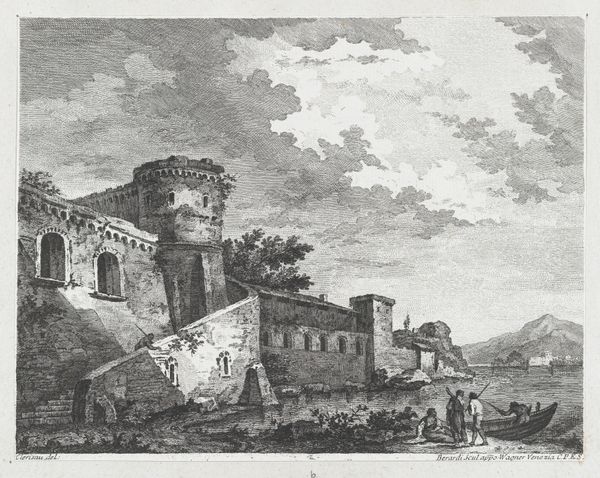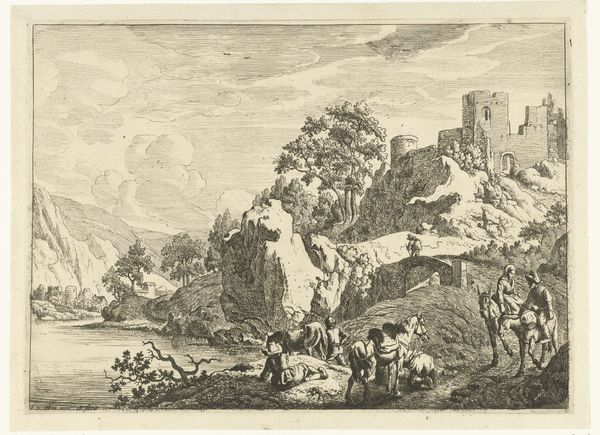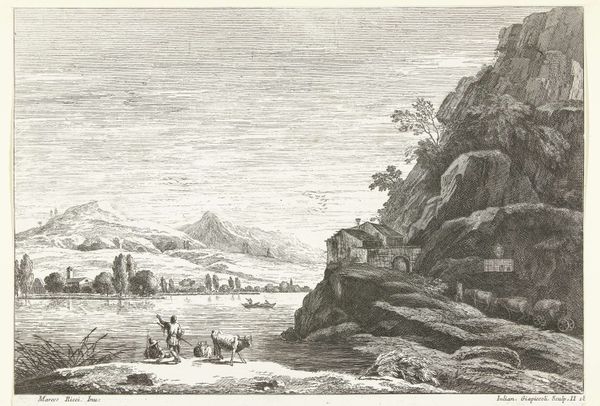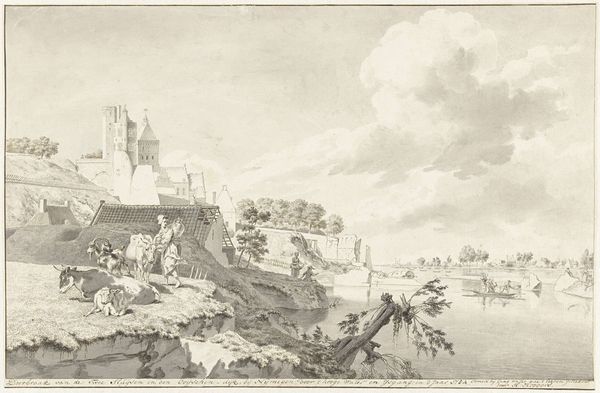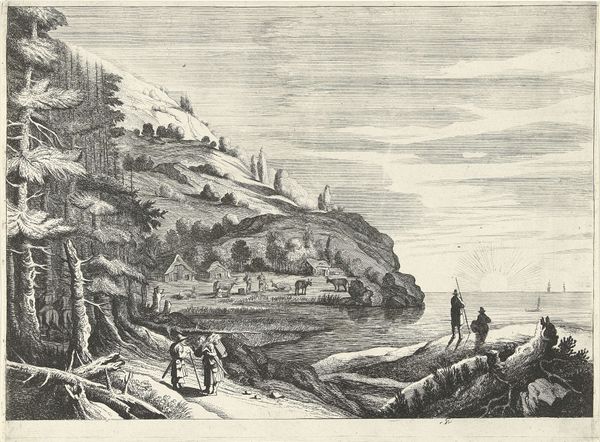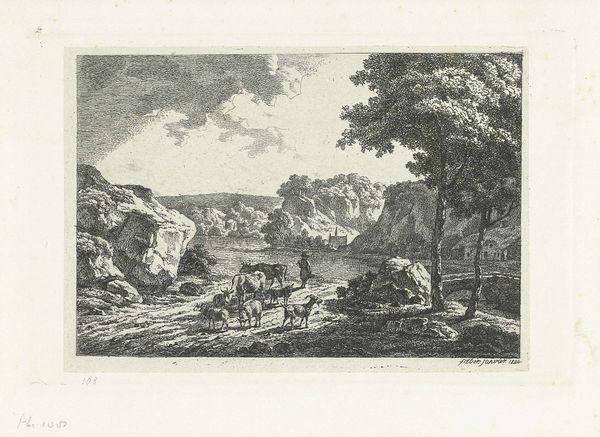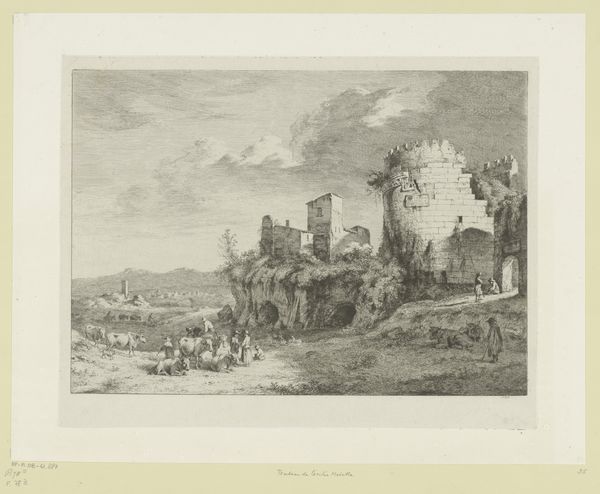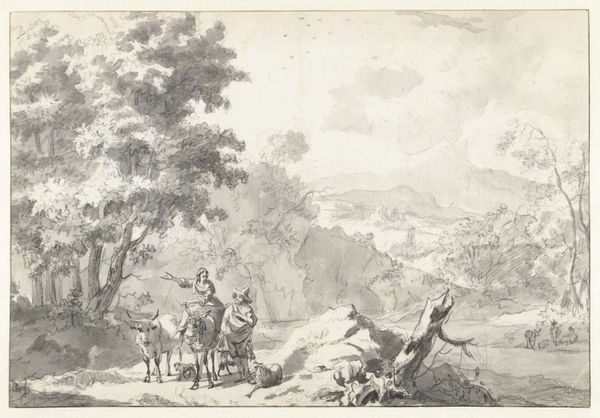
print, etching, engraving
# print
#
etching
#
landscape
#
genre-painting
#
engraving
Dimensions: height 146 mm, width 197 mm
Copyright: Rijks Museum: Open Domain
Curator: We’re now looking at a print called "Landschap met ruïne en vee," or "Landscape with Ruin and Cattle," created between 1679 and 1728 by Johannes Gronsveld. Editor: It has a very peaceful air to it, wouldn’t you agree? Despite the ruin, or perhaps because of it. The composition seems to deliberately contrast the decay of the stone structure with the very present, solid forms of the grazing cattle. Curator: Indeed. Formally, consider the masterful use of etching and engraving techniques to convey texture. Notice how the light plays across the animals' hides versus the rough-hewn facade of the ruin, all achieved through variations in line weight and density. There is an intricate relationship there. Editor: That relationship is what strikes me too! This image evokes themes prevalent during its time: a nostalgia for classical architecture intertwined with scenes of everyday pastoral life. The ruin is almost a statement about civilization’s inevitable decline. Doesn't this fit into a narrative of Dutch Golden Age prosperity questioning its own longevity? Curator: That's a viable interpretation. But the formal structure directs us also to contemplate it simply as a contrast in shape and form, rather than focusing solely on historical symbolism. The tower juxtaposes against the soft animal bodies as a semiotic mechanism. The soft and the hard; life and something nearly deceased. Editor: That tension is so interesting when thinking of its public role. The artwork allows the viewer to insert themself into the scenery while also meditating on the ephemeral nature of existence within these familiar settings. In effect, creating the public’s relationship with ideas of change and history. Curator: Ultimately, whether we view the print through a lens of societal critique or through its pure formal qualities, it invites close inspection, regardless. Editor: Absolutely, seeing Gronsveld weave the symbolic with the ordinary gives food for much speculation.
Comments
No comments
Be the first to comment and join the conversation on the ultimate creative platform.

